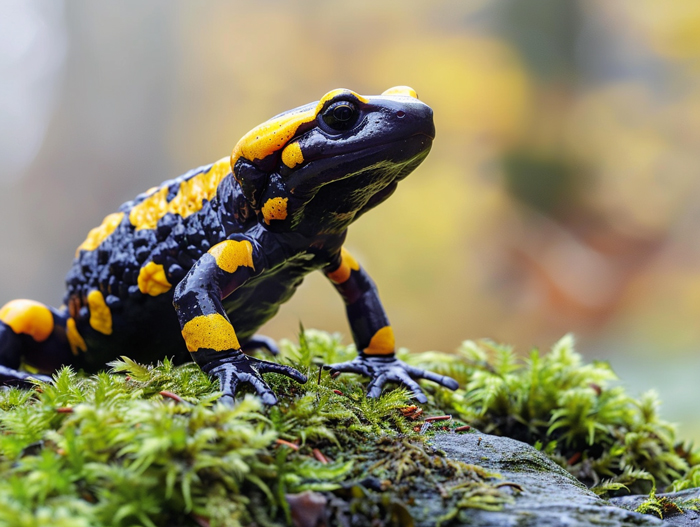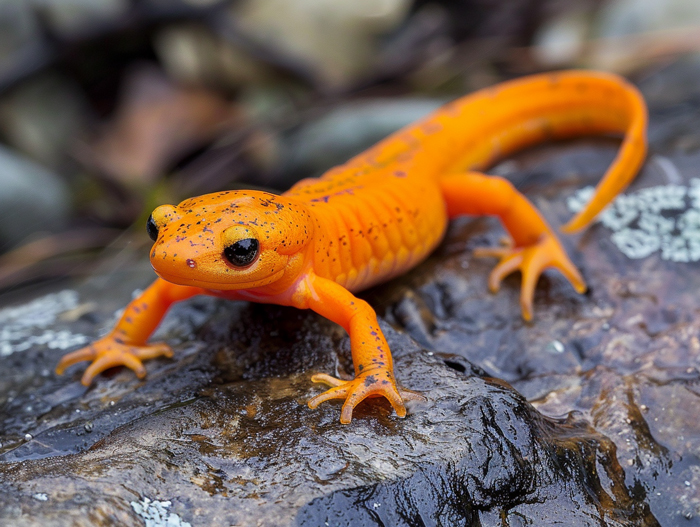Are you considering a unique pet companion? Salamanders might just be the perfect fit for you. These fascinating amphibians are captivating creatures that can bring a touch of nature into your home. But before you jump into the world of salamander ownership, there are some key factors to consider.
Keeping a salamander as a pet requires specific care and attention to ensure their well-being. From setting up the right habitat to understanding their dietary needs, there’s a lot to learn about these intriguing creatures. In this text, we’ll explore the ins and outs of salamander care and provide you with essential tips for creating a happy and healthy environment for your new pet.
Whether you’re a seasoned reptile enthusiast or a beginner looking to expand your pet collection, delving into the world of salamanders can be a rewarding experience. Get ready to discover the joys and challenges of keeping a salamander as a pet.
Key Takeaways
- Salamanders require specific care and attention to ensure their well-being, including setting up the right habitat and understanding their dietary needs.
- Temperature control and regular cleaning of their enclosure are crucial for maintaining a healthy environment for salamanders.
- Before getting a pet salamander, thoroughly research their care requirements, commitment level, and compatibility with your lifestyle to ensure a rewarding experience.
- Choose species of salamanders based on their habitat requirements, such as land-dwelling salamanders or aquatic species like Axolotls or Eastern Newts.
- Provide a suitable habitat with proper enclosure, substrate, temperature, humidity, lighting, and hideouts for your pet salamander’s well-being.
- Feed your salamander live foods, offer supplements, maintain a feeding schedule, provide freshwater, and minimize handling to reduce stress and ensure a healthy environment for your pet.
Considering a Salamander as a Pet

Thinking about welcoming a salamander into your home? Here’s what you need to know before diving into this unique pet ownership experience:
- Salamanders, often found in various habitats ranging from forests to wetlands, have diverse species, each requiring specific care.
- Their diet primarily consists of insects, worms, and small invertebrates, with some species requiring live food.
- Proper habitat setup involves providing a moist environment with access to water for swimming and hiding spots for security.
- Temperature control is crucial as salamanders are sensitive to fluctuations, requiring a consistent and suitable climate.
- Regular cleaning of their enclosure is essential to prevent the buildup of bacteria and maintain their health.
Before making the decision to bring a salamander into your life, ensure you’ve thoroughly researched their care requirements, commitment level, and compatibility with your lifestyle. Keeping these aspects in mind will make the experience rewarding for both you and your new amphibian friend.
Types of Salamanders That Make Good Pets

Land-dwelling Salamanders
- Choose species like Tiger Salamanders or Fire Salamanders known for adaptability to captive environments.
- Provide a terrarium with ample hiding spots to mimic their natural habitat.
- Maintain a consistent temperature and humidity level to ensure their well-being.
- Consider species such as Axolotls or Eastern Newts for aquatic setups.
- Set up an aquarium with clean, dechlorinated water and adequate space.
- Offer a varied diet including live foods to meet their nutritional needs.
Caring for a Pet Salamander

Habitat Requirements
- Enclosure: Choose a tank based on the size of your salamander.
- Substrate: Use moist soil, peat moss, or coconut fiber for burrowing.
- Temperature: Maintain a cool and moist habitat between 60°F to 75°F.
- Humidity: Keep humidity levels at 60%-80% to prevent dehydration.
- Lighting: Provide low-intensity lighting to mimic their natural environment.
- Hideouts: Include shelters like caves or plants for security.
Feeding and Diet
- Diet: Offer a variety of live foods like earthworms, crickets, and mealworms.
- Supplements: Dust food with calcium and vitamin supplements for nutritional balance.
- Feeding Schedule: Feed 2-3 times a week depending on the salamander species.
- Freshwater: Ensure a shallow dish of dechlorinated water for drinking and soaking.
- Limited Handling: Minimize handling to reduce stress and potential harm.
- Moist Hands: If handling is necessary, ensure your hands are moist to protect their skin.
- Gentle Approach: Approach your salamander calmly and avoid sudden movements.
- Observation: Opt for observation rather than handling to respect their natural behavior.
Remember, meeting these basic care requirements ensures a healthy and happy environment for your pet salamander.
Conclusion
Ensuring the well-being of your pet salamander involves meeting their specific habitat and care requirements. By providing the right tank setup, appropriate feeding schedule, and limited handling, you can create a healthy environment for your amphibian companion. Remember to maintain optimal temperature, humidity, and lighting conditions, as well as offering live foods and supplements for their diet. Prioritize observation over handling to minimize stress and ensure the happiness of your pet salamander. Following these guidelines will help you establish a strong bond with your unique pet and enjoy their fascinating presence in your home.

Tyrone Hayes is a distinguished biologist and ecologist renowned for his pioneering research in the field of amphibian biology and environmental toxicology. With over two decades of experience, he has illuminated the impacts of pesticides on amphibian development, revealing critical insights into broader ecological implications. Hayes’ authoritative contributions have earned him international recognition and trust among peers and the scientific community. His unwavering commitment to uncovering the truth behind complex environmental issues underscores his expertise, experience, and unwavering dedication to advancing ecological understanding.
